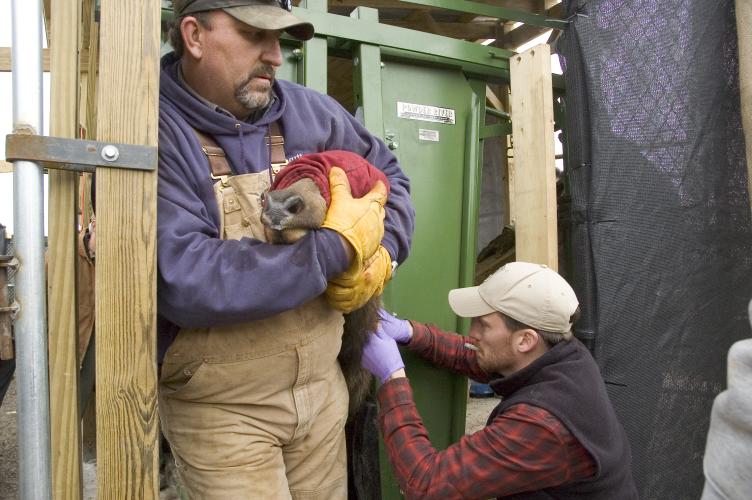
Xplor reconnects kids to nature and helps them find adventure in their own backyard. Free to residents of Missouri.


































Stay in Touch with MDC news, newsletters, events, and manage your subscription

Xplor reconnects kids to nature and helps them find adventure in their own backyard. Free to residents of Missouri.

A monthly publication about conservation in Missouri. Started in 1938, the printed magazine is free to residents of Missouri.


PINEVILLE, Ky.–Elk earmarked to form the nucleus of a restored herd in southeastern Missouri have passed one of several health tests necessary before coming to their new home.
A veterinary health workup of elk Jan. 25 marked the start of a 90-day quarantine period to ensure the animals’ health. The Missouri Department of Conservation (MDC) worked with the Missouri State Veterinarian and the Missouri Department of Agriculture to develop the elk health protocols, which are more stringent than any that apply to livestock brought into Missouri.
MDC worked with the Kentucky Department of Fish and Wildlife Resources (KDFW) to trap the elk. The two agencies are conducting veterinary tests at a holding pen on the Cumberland Plateau in eastern Kentucky.
In order to draw blood and administer bovine tuberculosis (TB) tests, the elk are run though a squeeze chute like those used when working cattle. All the elk passed the first round of TB testing.
“That is a good first step,” said MDC Resource Scientist Jason Sumners. “We will retest in late April to be double sure they are TB-free. In the meantime, we have several other tests to perform to be sure the elk we bring to Missouri are healthy.”
Sumners said the next test veterinarians will perform on Missouri’s elk is for chronic wasting disease (CWD). He expects that work, which uses tiny tissue samples from lymph nodes on the animals’ hindquarters, to be done in March.
“This test is not yet certified by veterinary health officials,” said Sumners. “In fact, there is no approved live test for CWD. However, this is the best tool we have to detect CWD in live animals, and we feel it is a prudent measure to protect Missouri’s wild and captive deer.”
Testing for other diseases currently is underway on blood samples. These tests will check for anaplasmosis, brucellosis, bovine viral diarrhea, vesicular stomatitis, epizootic hemorrhagic disease, and blue tongue.
Sumners said the handling necessary for these tests is extremely stressful for the elk.
“These are truly wild animals,” said Sumners. “They do their best to avoid people, and they can injure themselves or others as they try to avoid being herded into confined spaces. We try to minimize this danger, but a few injuries are inevitable.”
Sumners said MDC has had to euthanize several elk because of injuries and from capture myopathy, a condition that affects elk and white-tailed deer when they are trapped and handled. Forty-one elk remain in the holding pen in Kentucky.
All elk that die at the holding pen are examined to determine the cause of death. They also are tested for CWD.
Sumners said that approximately 10 percent of wild elk cows in Kentucky die each year from natural causes. Most of this annual mortality occurs during the winter. While losses among the captured elk have been higher than natural winter mortality, Sumners said this was expected.
“Any time you trap elk or deer you lose some,” he said. “I expect the losses to decrease as the remaining animals settle down.”
Sumners said wild elk’s sensitivity to human disturbance is one of the reasons MDC restricts access to the holding pen in Kentucky and will continue to do so while the animals are in a holding pen at Peck Ranch Conservation Area this spring. Elk viewing will be unrestricted once the elk are released into the elk-restoration zone.
“We would like to allow public viewing,” said Sumners, “However, other states’ experience has shown the importance of limiting as much as possible. Even a few people around a holding pen make elk skittish. We have to keep that kind of disturbance to a minimum for the animals’ safety.”
Missouri’s elk have been fitted with ear tags and with tiny, implanted identification tags like those on pets. Each elk brought to Missouri also will receive a radio collar before being released into the 346-square mile elk-restoration zone covering parts of Carter, Reynolds and Shannon counties. This will enable MDC to track their movements.
-Jim Low-